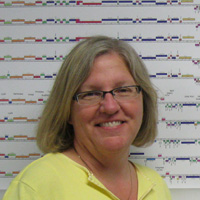Welcome to the forums at seaphages.org. Please feel free to ask any questions related to the SEA-PHAGES program. Any logged-in user may post new topics and reply to existing topics. If you'd like to see a new forum created, please contact us using our form or email us at info@seaphages.org.
Recent Activity
All posts created by debbie
| Link to this post | posted 06 May, 2022 17:51 | |
|---|---|
|
|
Fred, I would not call this gene a minor tail protein. It is at the end of a string of minor tail proteins and the next genes change directions. In my mind, these genes could be anything. debbie |
| Link to this post | posted 28 Apr, 2022 19:17 | |
|---|---|
|
|
Great idea! I just added that! debbie |
Posted in: Functional Annotation → IrrE or metallopeptidase
| Link to this post | posted 28 Apr, 2022 17:57 | |
|---|---|
|
|
We keep bumping into the IrrE protein. I have added "IrrE-like protein" to the Approved Function List. Will that work? debbie |
Posted in: Functional Annotation → IrrE or metallopeptidase
| Link to this post | posted 28 Apr, 2022 17:42 | |
|---|---|
|
|
Maria, I think that this is something to investigate. Let's see what your students turn up this ummer and address it then. Will that work? debbie |
Posted in: Functional Annotation → Membrane protein
| Link to this post | posted 28 Apr, 2022 00:55 | |
|---|---|
|
|
Hi all, I just updated SEA-PHAGES phages shared with SEA-PHAGES schools. Thanks for making your phages available to others! April 27, 2022 |
Posted in: Shared SEA-PHAGES Phages → Shared SEA-PHAGES Phages
| Link to this post | posted 25 Apr, 2022 19:55 | |
|---|---|
|
|
function assignment being used is "major capsid and protease fusion protein". |
Posted in: Cluster AU Annotation Tips → capsid fusion
| Link to this post | posted 25 Apr, 2022 19:40 | |
|---|---|
|
|
Any time one transmembrane domain is found, it is questionable. So we recommend using a second program. that usually takes care of the discrepancy. Thanks for doing the quick experiment. |
Posted in: Functional Annotation → Deep TMHMM?
| Link to this post | posted 25 Apr, 2022 19:06 | |
|---|---|
|
|
Either and all work. debbie |
Posted in: Functional Annotation → Deep TMHMM?
| Link to this post | posted 22 Apr, 2022 12:34 | |
|---|---|
|
|
Amaya, As I look at this gene, I would NOT call it any of the above, but rather a Hypothetical Protein. If it was a hit to the transferase of the cluster B2's Rosebush DNA modification system, using DpdA-like tRNA-guanine transglycosylase would be appropriate. Sonali, a phage with the other queosine pathway genes (I think) suggests that transferase could be the DpdA-like tRNA-guanine transglycosylase. But I haven't looked closely yet. In the case of Aoka, when I HHPred that gene, I do not get a single significant hit. I worked through this with Christian and we agreed to not call it. Here is the caveat, you have a bunch of orphams in the area. Have you been able to assign a function to any of the surrounding genes? Depending on what you have found, I would like to look again. |
| Link to this post | posted 22 Apr, 2022 11:22 | |
|---|---|
|
|
Fred, Terrific. I think the note is there. https://seaphagesbioinformatics.helpdocsonline.com/article-40 The 're-look' was a good thing. I am glad we took the time and weighed the evidence. debbie |


 84Kb
84Kb